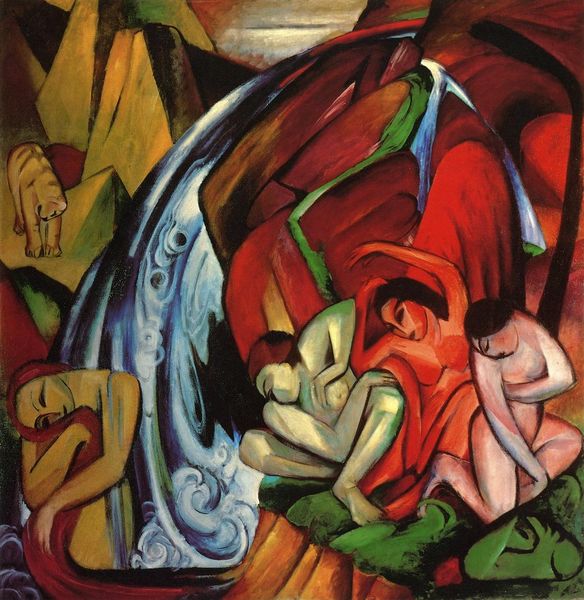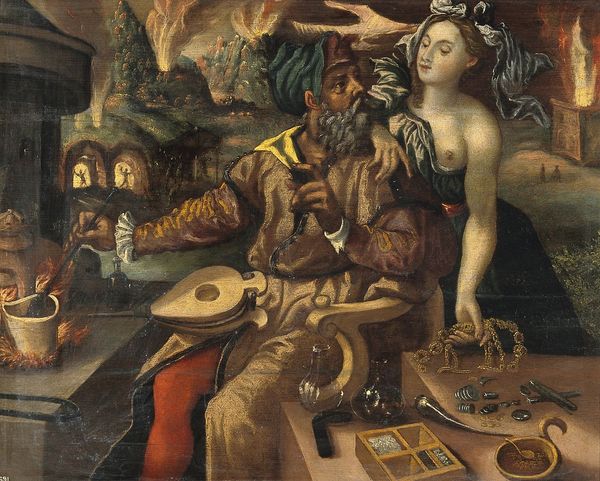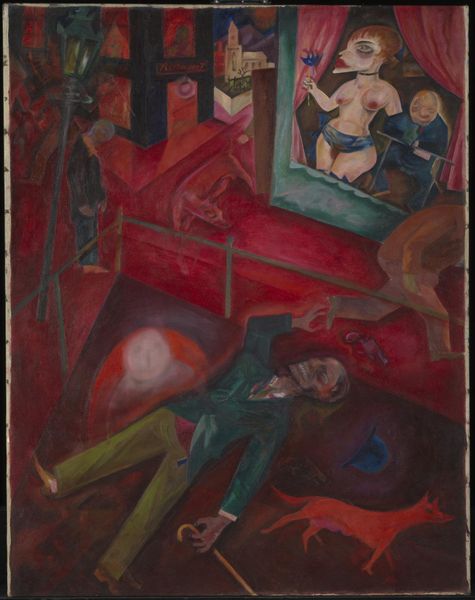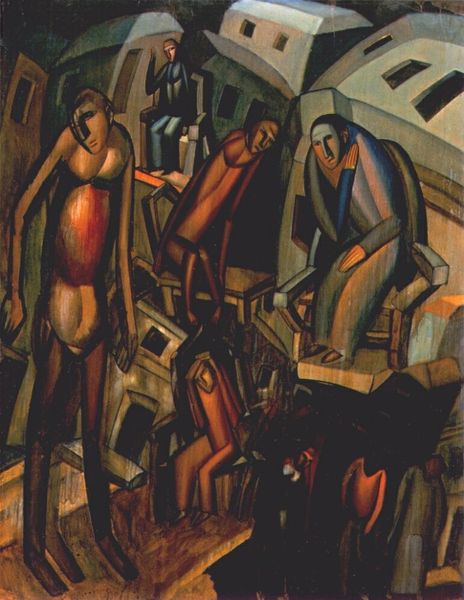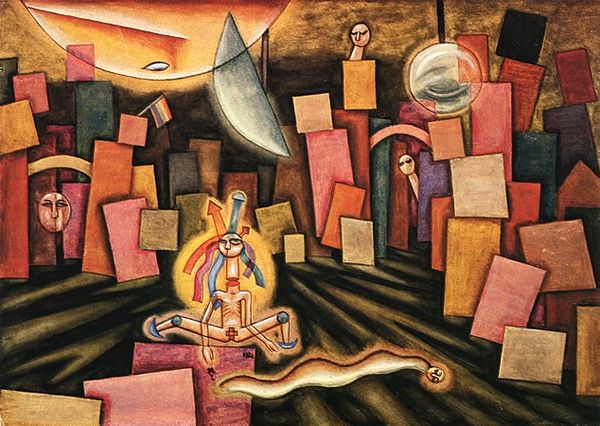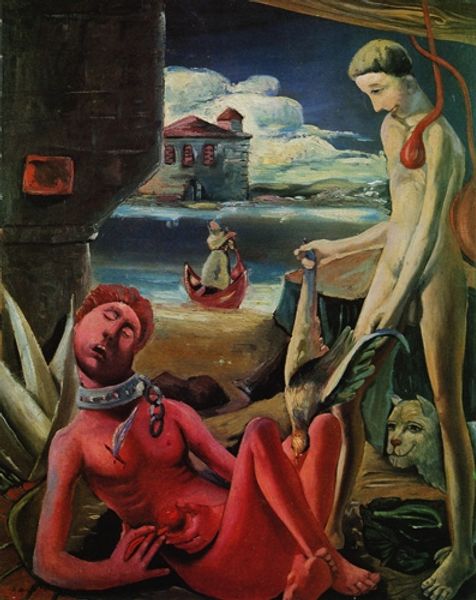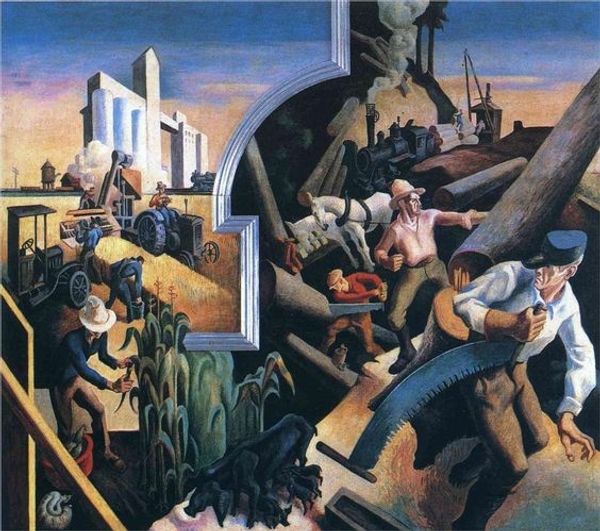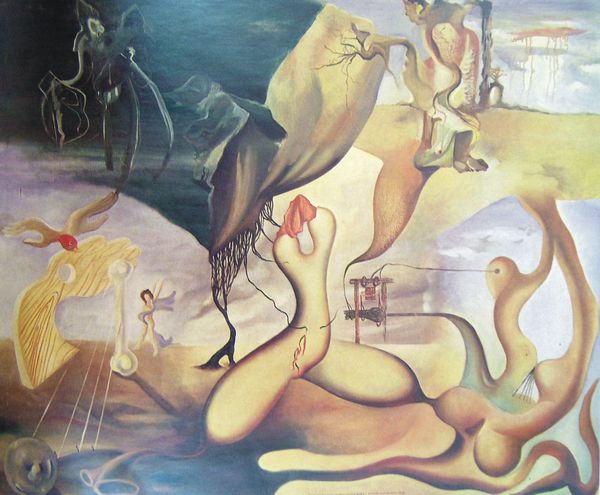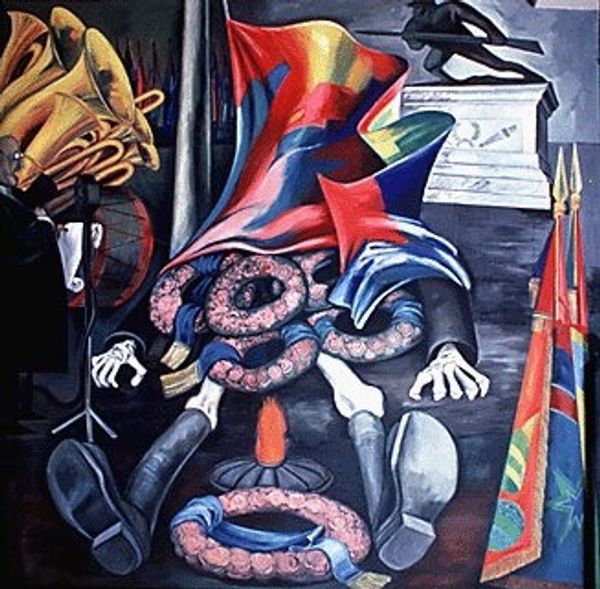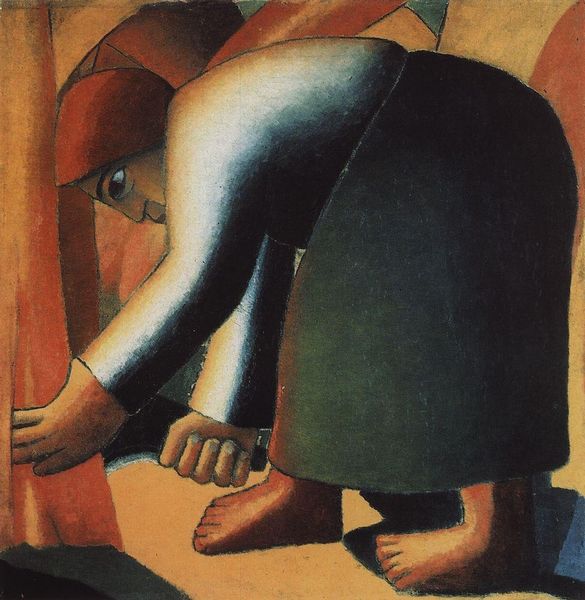
painting, oil-paint
#
narrative-art
#
painting
#
oil-paint
#
landscape
#
figuration
#
oil painting
#
surrealism
Copyright: Antonio Dacosta,Fair Use
Antonio Dacosta’s unsettling canvas, Cena Aberta, presents a disturbing allegory of modern life in Portugal. Painted during the mid-20th century, a time of political turmoil and social upheaval under the Estado Novo regime, the artwork utilizes a Surrealist vocabulary to critique the status quo. The disjointed figures and nightmarish imagery create a sense of unease, reflecting the oppressive atmosphere of the dictatorship. The family in the television set may reference the propaganda being disseminated by the authoritarian regime. The monstrous figures, like the bull, could be symbols of the regime's power. The images within the television set, and the arrow piercing the giant head, may function as a symbolic assassination of the regime and its propaganda. To fully grasp the historical context of this painting, scholars delve into archives, political pamphlets, and cultural ephemera. Such investigations reveal how artists like Dacosta used symbolism to challenge the regime's cultural norms and to assert the public role of art as a form of resistance.
Comments
No comments
Be the first to comment and join the conversation on the ultimate creative platform.


